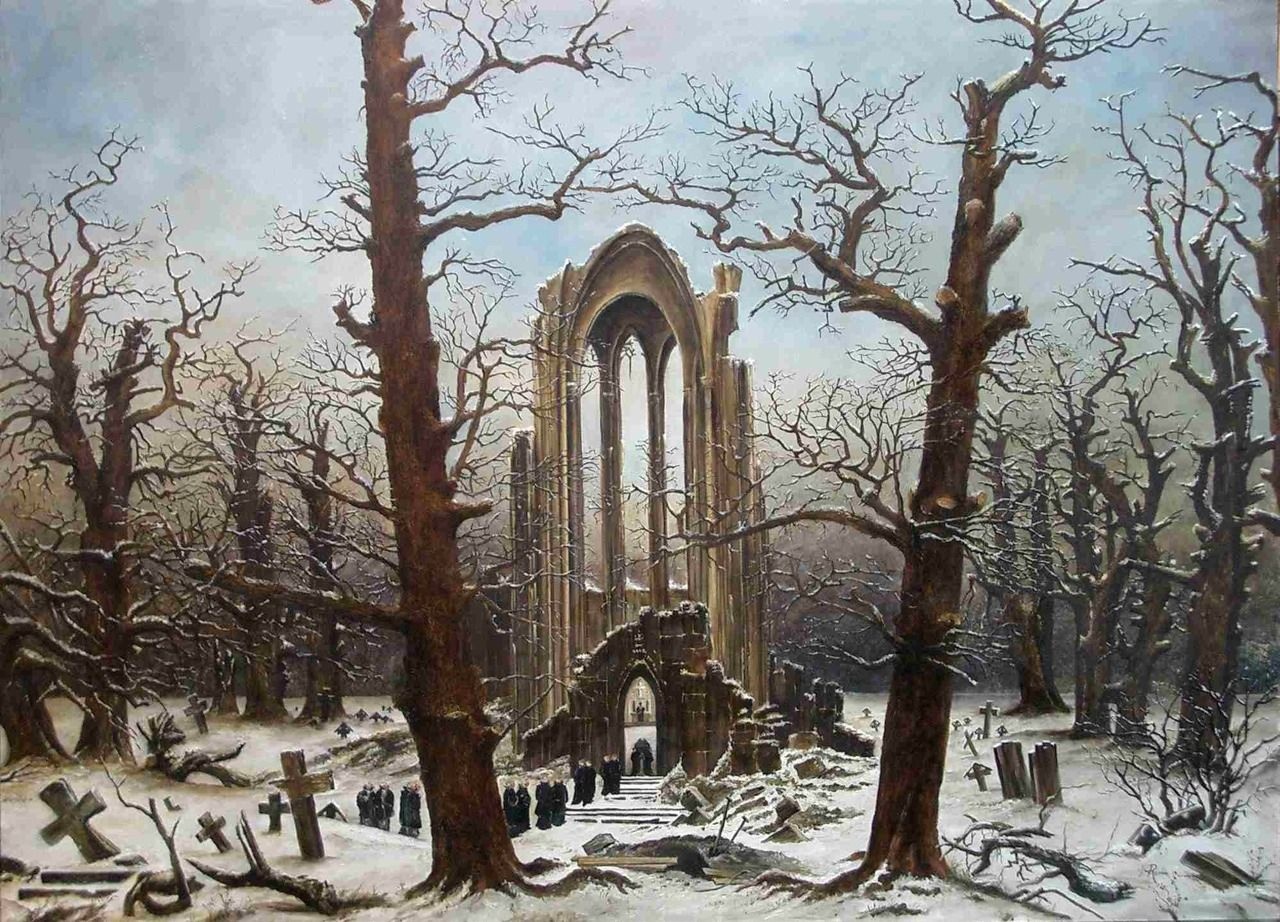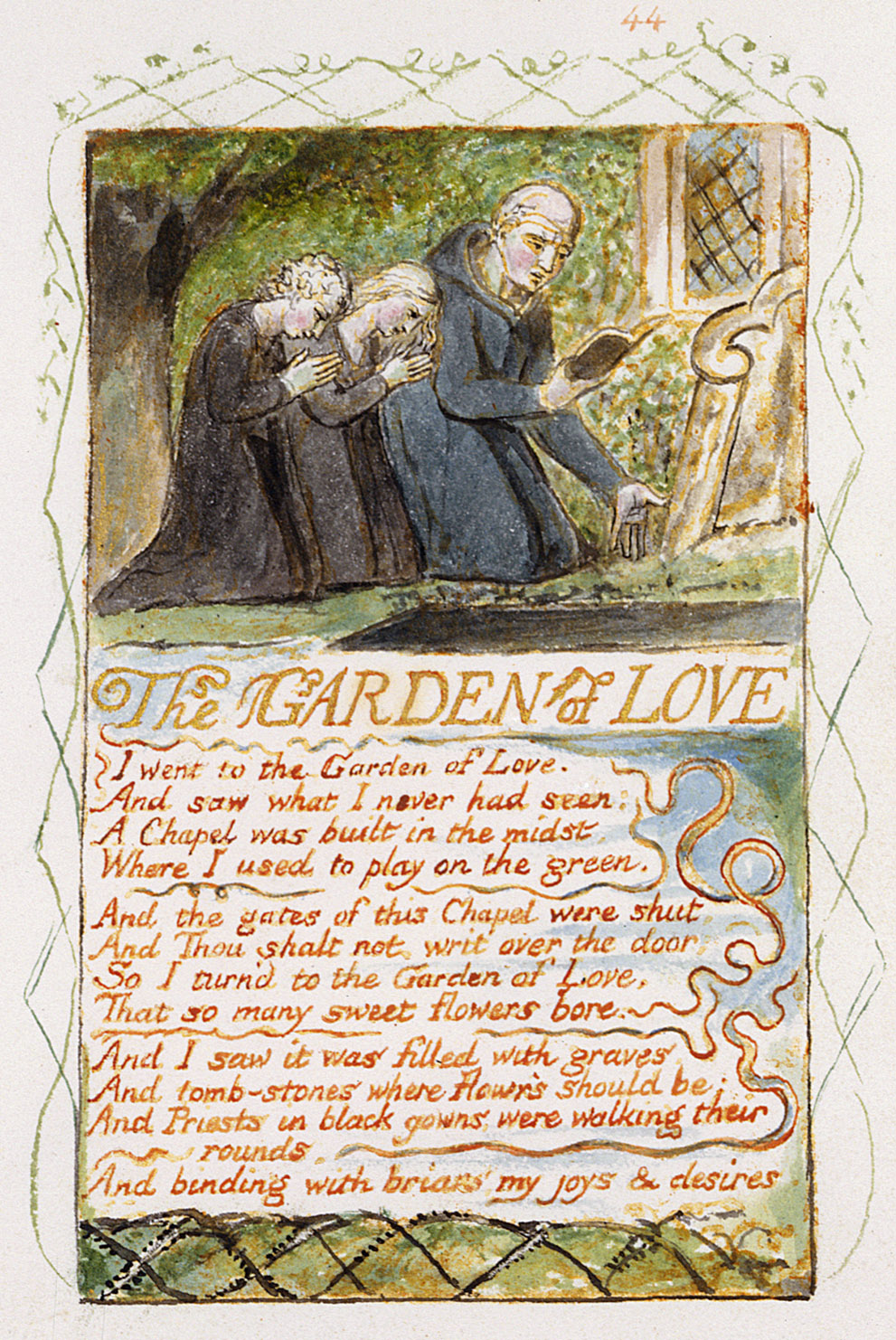
I have presented the poem “A Little Girl Lost” by the visionary poet and painter William Blake (1757–1827), published in Songs of Experience (1794). In it, he envisages a future where children and adolescents will freely enjoy nudity and love, then the religious condemnation and parental repression of these pleasures will cause indignation.
Another poem in that collection denounces the repression of love and sexuality by the Church and its clergy. In the Garden of Love, a Chapel is built, its gates are shut with the prohibition ‘thou shall not,’ and the flowers have been replaced by tombstones and priests in black gowns who bind with briars joys and desires:
The GARDEN of LOVE
by William Blake
I went to the Garden of Love,
And saw what I never had seen:
A Chapel was built in the midst,
Where I used to play on the green.
And the gates of this Chapel were shut,
And Thou shalt not. writ over the door;
So I turn’d to the Garden of Love,
That so many sweet flowers bore.
And I saw it was filled with graves,
And tomb-stones where flowers should be;
And Priests in black gowns, were walking their rounds,
And binding with briars, my joys & desires.
In the illustration by Blake, one sees a boy and a girl kneeling in prayer with a priest, which hints that children also enjoyed the Garden of Love before it was taken over by the clergy. The freedom of childhood has been replaced by religious indoctrination.

There was on Blogger the site The Garden of Change, devoted to an analysis of this poem; a good deal of it has been saved on the Internet Archive Wayback Machine. Its articles highlight several key words of the poem. In particular, it points out the role of organised religion in destroying the innocent enjoyment of life experienced during childhood, then lost in adulthood.
The site crossref-it.info also gave an interpretation of the poem, it has been saved on the Internet Archive Wayback Machine. It gives the following commentary:
In this poem, Blake is attacking the way in which human sexuality has been inhibited and distorted by the prohibitions of organised religion (‘Thou shalt not’) and the development of shame in its regard. He felt that sexuality should be unselfconscious, bringing joy and life (playing on the green, bearing flowers). However, its fallen expression now locks people into their bodies as though they were dead — their bodies are like coffins (tombs and gravestones). Sexual joy and desire is now hedged round with fears and prohibitions, policed by the power of the Church. The natural freedom of the garden and its greenness (fertility) is set against the closed, human-made chapel and its black-robed priests, denoting death.
Within the literary tradition, the Garden of Love is used as an image of the relationship between lovers and also of their inner selves. The garden here also has this double aspect. It is an expression of the social restrictions on sex but also of the speaker’s inner self. It is characteristic of the poems of experience that the speaker blames the inability to express ‘joys and desires’ only on external factors like the Church and ignores any personal responsibility.
As in the previous poem, one sees here Blake advocating a love without thorns, free of possession and jealousy, liberated from religious repression and allowed to children.
Source of the illustration: The William Blake Archive, Songs of Innocence and of Experience, Copy Y, The GARDEN of LOVE, Object 44. The image is here.
Source of the poem: A transcription following the text on Blake’s illustration has been given by The Garden of Change. There are other transcriptions with a slightly different punctuation: on Wikisource and on William Blake reloaded, a deceased WordPress blog with an educational orientation.
This poem was included in a post previously published on Agapeta, 2015/10/20.

